THE INVISIBLE SENIORS OF PAKISTAN
The story goes something like this. There was once a blind man who lived in a small town. But even though he could not see, he carried a lamp with him whenever he went out after dark.One night, as he was returning home after dinner, he came across a group of young travellers. They noticed the blind man carrying a lamp and started making fun of him. One of them asked, “Hey man, you are blind...Why do you carry a lamp?”
“This lamp is not for me, it is for those who can see,” the blind man replied with a smile. “You may not see this blind man coming in the dark and end up pushing him. That is why I carry the lamp.”
This bedtime story teaches children many things. It teaches them the importance of seeing things from someone else’s perspective. It teaches them to be mindful of others’ needs. And it teaches them to be considerate and respectful.
All important lessons that we sometimes forget as adults. Beyond the lessons for children, one wonders what incident might have led the blind man to come up with his own solution. One wonders why the small town’s streets were so dark that the blind man had to carry a light. And one wonders if better design could’ve made the man’s life better.
The answer to the last question would be a resounding yes. Policy-makers, town planners and designers often forget, or simply disregard, the needs of different kinds of people. But when they take a more considered approach, they can certainly make lives of a lot of people easier.Thanks to advances in medicine, the number of citizens who are 60 years and above is rising around the world. But in this country, it is as if this increasing segment of society — and its particular health and social issues — is completely under the radar of policy-makers and planners
This essay sheds light on a group that is often forgotten by policy-makers: the elderly population of Pakistan.
A GROWING CONCERN
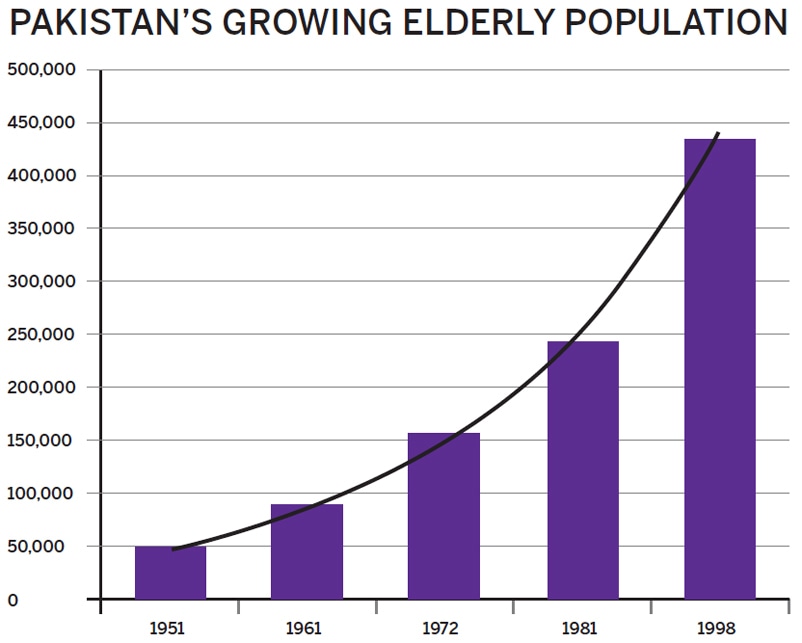
— Compiled from various census reports
Owing to the advancements made in the field of medical science, the number of senior citizens around the world has grown exponentially. In 1950, there were globally about 200 million people aged over 60. That number is expected to reach 1.2 billion by 2025. According to some estimates, the number of senior citizens in the ‘developing world’ will stand at 850 million.
According to HelpAge International, a London-based NGO working with and for older people, as of 2019, almost 15 million people living in Pakistan are aged over 60; that is seven percent of the country’s total population. The proportion of older people is expected to rise to 12 percent in 2050, with 40 million people in Pakistan aged over 60.
Karachi has shown a steady rise in the number of senior citizens (the population aged 60 years and above). At the time of the Partition, the city had only 47,303 senior citizens. The number rose to 433,717 or 4.4 percent of the entire population of 9.8 million, by 1998.
The detailed age-cohort results of the much-contested 2017 census are still awaited but, if we take the same 4.4 percent as the yardstick, and go with the estimate of Karachi’s current population being 20 million, the city has around 1 million senior citizens. That’s a considerable chunk of Karachi’s population.
OLD AND ALONE
With old age often comes a loss of independence, and seniors have to rely on others for even daily tasks. Broadly, the forms of dependence can be categorised into three major groups: financial, physical and emotional. And to provide seniors with support in these three categories, a society needs strong institutions, and policy that is formulated keeping in mind changing dynamics, lifestyles and family structures.
Pakistani society is witnessing a transformation in economic and social spheres. This is most noticeable in major urban centres such as Karachi, Lahore and Islamabad. More and more youngsters are leaving Pakistan. Migration out of the country is increasing. And these migrations often leave the weak and the elderly behind, in a country without the infrastructure or systems to support them.
Of course, people migrating to other countries from Pakistan is nothing new. But the dynamics have changed. In the 1970s, economic independence was the primary objective of people leaving the country. Many immigrating children would financially support their parents back in Pakistan. And families tended to be bigger, with some children staying behind with the parents.
By the year 2000, higher educational attainment, political independence and escaping religious persecution became the expediting factors for the young to go abroad. In some smaller families, an entire generation has moved abroad, leaving behind their ageing parents.
Mr and Mrs Rizvi led very privileged lives. Mr Rizvi, who had a high-profile job in a public sector institution, continued to live comfortably with his wife in Karachi’s Defence Housing Authority, even after his retirement. But his evenings were often filled with all the symptoms of empty nest syndrome.
Being a diehard believer in careerism, Mr Rizvi had always encouraged his three sons to aim as high as possible. After graduating from prestigious engineering and medical universities of Karachi, they all went abroad to pursue higher education and economic independence, and settled away from Pakistan.
The elderly couple were mostly taken care of by their extended family, and servants and helpers. While they could afford the help, not everyone is as fortunate. Eventually, the elderly couple passed on, one after the other.
Prosperity alleviates some hardships of life, but it is no replacement for human interaction and social networks. One of the most pressing concerns is the isolation that the elderly are often subjected to. While Mr and Mrs Rizvi had servants, they had no community, no support system or spaces where they could socialise, laugh and smile.
Everyone dies alone. But systems can be put in place to ensure that no one has to live a lonely life, waiting for death.
OLD AND UNWELL
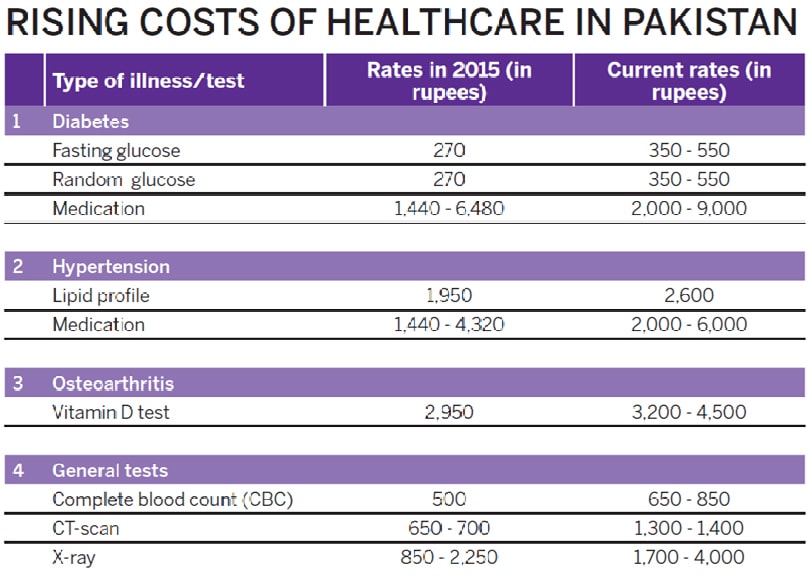
— Based on market rates in Karachi
According to Assessment and Management of Geriatric Care in Pakistan, an article published in the Journal of Gerontology & Geriatric Research, the Government of Pakistan does not subsidise the health system and treatment for the elderly population. Geriatrics as a specialised medical discipline has also not been well established in the country. And general specialists and medical practitioners see and treat our senior citizens.
With general hospitals being perpetually overworked and understaffed, the elderly often do not receive the comprehensive medical care they need. There are also next to no rehabilitation centres for the elderly, where they can go when suffering from fractures, strokes or similar medical conditions. Finally, while the number of senior citizens in the country is rising, there is still very little observation-based data that deals with diseases among the elderly population of Pakistan.
As individuals grow older, their medical bills continue to grow steeper. And in the absence of financial safeguards, many have no option but to opt out of treatment.
Medical expenses are rising at an alarming rate. As per press reports, in 2019, pharmaceutical companies increased the prices of 45,000 medicines by up to 15 percent.
The prices of 463 ‘hardship’ medicines increased up to 200 percent in the same year. In the hardship category, if companies claim that it is not viable for them to manufacture certain drugs due to their high cost of production, their prices can be increased.
In October 2020, the Drug Regulatory Authority of Pakistan (Drap) approved increased rates of 235 drugs. It is believed by many that this was done after intense lobbying by pharmaceutical corporations.
The elderly with chronic illnesses are among those hit the hardest by the rising medical costs, and some are forced to reduce the intake of the medicines or to quit the treatment completely.
OLD AND PENNILESS
While treatment costs and the prices of medication continue to rise, the elderly find themselves with no financial safeguards and, often, without the means to even afford basic care.
The Employees’ Old-Age Benefits Institution (EOBI) was formed with the enforcement of the Employees’ Old-Age Benefits (EOB) Act 1976, to achieve the objective of compulsory social insurance and to provide financial cover to senior citizens.
According to the Eobi website, under the EOB Scheme, insured persons are entitled to avail benefits including ‘old-age pension’ after retirement. The minimum pension rate is set at 8,500 rupees.
Besides the fact that this amount is clearly too meagre to make ends meet, this scheme has other problems too. A glaring one is that the scheme does not cover a major chunk of Pakistan’s senior citizens’ population. According to various sources, 60 percent of Pakistan’s economy is informal. So it can be safely assumed that this scheme, even in ideal conditions, works for only 40 percent of the population.
But even the remaining 40 percent of employees are not always covered, because many employers never register their workers, to save money.
Additionally, the share of public sector employment in Pakistan, as a share of total employment, was reportedly only around 7.5 percent of the labour force in 2014. In comparison, the ratio was 15 percent in China, 21 percent in the United Kingdom and 35 percent in the United States in recent years.
Pensions, a public sector privilege, could be of some help, but not for all, as the majority of the workforce remains out of the pension ambit.
The current government has made some progress in introducing pension reforms. But pension remains a contentious issue. According to a Dawn report from earlier this month, in its first quarterly report of FY 21, the State Bank of Pakistan noted that public sector pension expenditure has risen sharply over the past decade and the unfunded nature of pension payments in the country is making the current structure ‘unsustainable’.
The report noted that the overall pension spending as a share of tax revenue had reached 18.7 percent as of FY20, almost double the level a decade earlier.
It was announced earlier that the Pay and Pension Commission will be reviewing the existing pay and pension mechanism and propose financially viable solutions. While it is tempting to be optimistic, one wonders what undiscovered solutions the commission will find.
THE MARKET’S RESPONSE
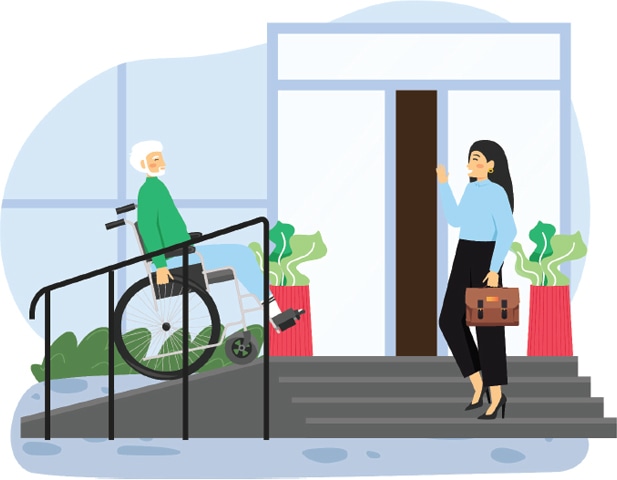
Neoliberal reforms of the 1980s and 1990s, which advocated a greater role of the market forces, led to deep changes in healthcare systems in Pakistan. Low income groups and the elderly, with meagre and dwindling resources at their disposal, became financially marginalised and their access to healthcare services decreased, especially in cities such as Karachi.
The reforms focused on economic indicators, rather than human rights. Thus, they ended up disproportionately affecting the most vulnerable segments of the population, senior citizens being one of the many such segments. It so happens in market economies that capital is more important than humans.
As long as the extended family is the standard family, as was the case in pre-industrial economies, elders will have a place in society and a clearly defined role. But as societies modernise, the elderly, unable to work outside of the home, have less to offer economically and are seen as a burden. As people age, they are abandoned and lose much of their familial support, since they become a non-productive economic burden, useless for market forces.
Thus, unsurprisingly, the response of the market is never going to be in favour of senior citizens. There are a limited number of old-age homes in Karachi. And, with a few exceptions, the ones that do exist see taking care of the elderly as nothing more than a lucrative business. They charge high fees and the ‘homes’ they run feel more like prisons for the elderly.
The harsh environment at these spaces sometimes ends up having a detrimental psychological impact on their residents. Living without children and grandchildren in an alien setting, with little choice of food and limited privacy, is far from an ideal situation.
CHANGES IN DWELLING AND OTHER SOCIAL ISSUES
The housing preferences in the major urban centres of Pakistan is dictated by a number of factors, including changes in family structures, affordability, neighbourhood security, and proximity to work places, educational institutions and healthcare facilities.
This has resulted in the vertical growth of major cities across the country, and Karachi is no exception. But this market-centred change is not ideal for senior citizens.
Because asthma and rheumatoid arthritis are common ailments in the aged, it is difficult for them to climb stairs. And due to frequent power outages, elevators are not always reliable. Besides, some high-rises have shabby and dysfunctional elevators, while other, comparatively low-rise buildings, have no elevators at all. Caged and elevated dwelling make the elderly, particularly women, prisoners in their respective abodes.
Quoting the Karachi Strategic Development Plan 2020 Survey, noted town planner and architect Arif Hasan wrote that 89 percent of families in Karachi are nuclear. Thirty years ago, in 1989, that figure was a mere 54 percent. As more and more younger individuals decide to live on their own, their parents’ accommodation and care becomes a game of musical chair for reluctant players.
There are other factors at play too. Rising inflation and joblessness among the youth makes it difficult for them to financially support their parents, especially in households where a single pay cheque is also providing for a spouse and children.
Even multi-income households have their own problems. As both the spouses work, they have less time for leisurely activities or even to spend at home. The ageing parents wait for windows of opportunities to spend time with their children. The resultant isolation has deep psychological impacts on the elderly parents. And the caretakers have to deal with guilt for being away from their dependents for long stretches of time.
SUPPORTING THE ELDERLY
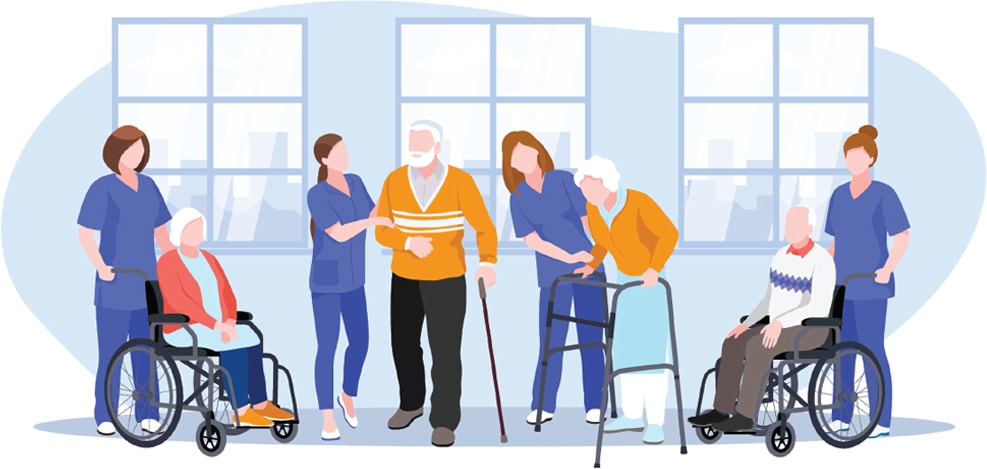
Supporting the elderly is ultimately up to the children. While many struggle to provide their parents with the care they need, other senior citizens, who may not have children or whose children do not live with them, find themselves with next to no support whatsoever.
Some feel abandoned by their families. And, indeed, they have also been abandoned by the government and policy makers.
Many planning papers and development initiatives seem to simply ignore the growing elderly population. The Karachi Strategic Development Plan 2020, for example, makes no mention of senior citizens. At multiple points in the document, it is stated that the purpose of the plan is to make Karachi an ‘inclusive city’. Yet, the planners apparently forgot to include an important segment of the society.
Planning must take into consideration the needs of the ever-expanding population of senior citizens. There is also a need to re-orient health service in favour of the elderly, and the whole medical system needs to be reimagined to benefit our vulnerable elderly population.
Questions such as where the elderly will live, how they will sustain themselves, how can they be made to feel less isolated, need to be on every planner’s mind. After all, sooner or later, nearly everyone will find themself in this position.
As the poet Omar Khayyám wrote:
Oh, come with old Khayyam and leave the Wise
To talk; one thing is certain, that Life flies;
One thing is certain, and the Rest is Lies;
The Flower that once has blown forever dies.
(XXVI — Rubaiyat of Omar Khayyám)
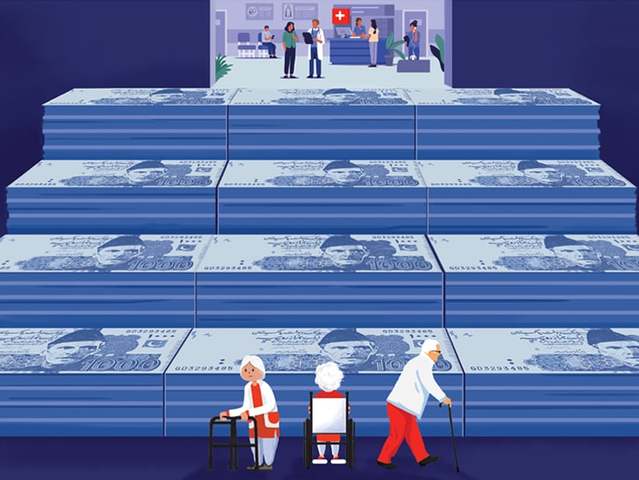
THE INVISIBLE SENIORS OF PAKISTAN
Thanks to advances in medicine, the number of citizens who are 60 years and above is rising around the world. But in this country
www.dawn.com

